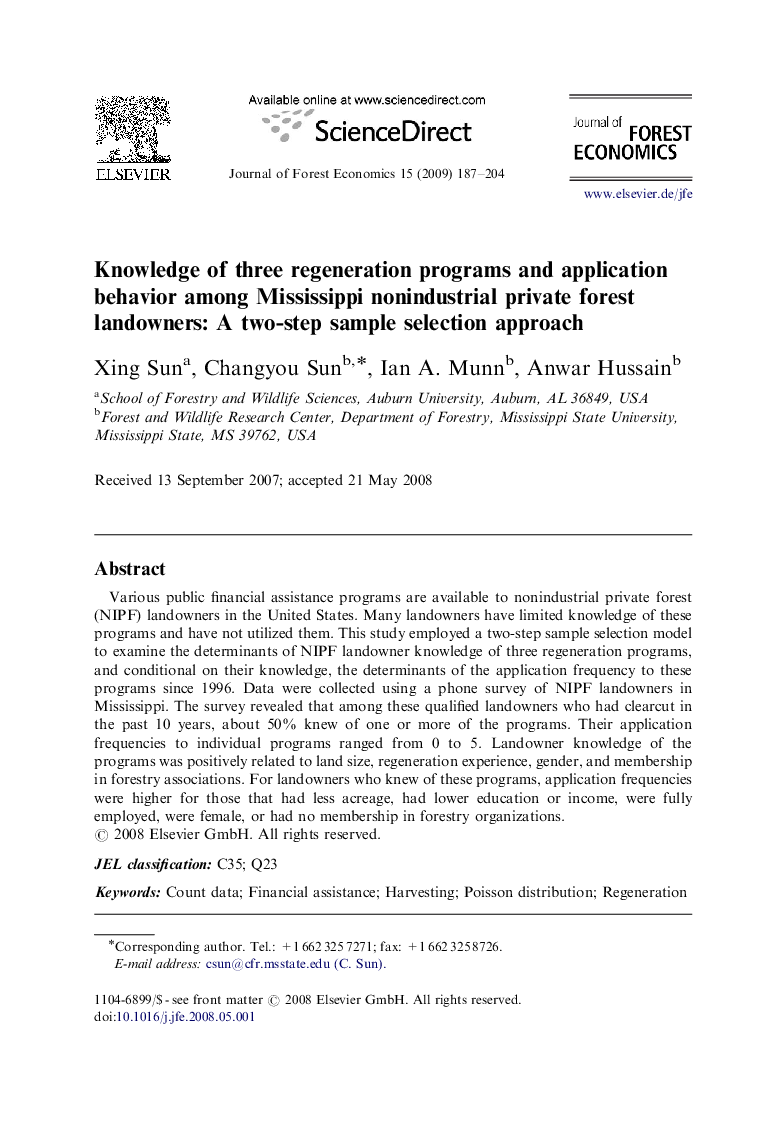| Article ID | Journal | Published Year | Pages | File Type |
|---|---|---|---|---|
| 92108 | Journal of Forest Economics | 2009 | 18 Pages |
Various public financial assistance programs are available to nonindustrial private forest (NIPF) landowners in the United States. Many landowners have limited knowledge of these programs and have not utilized them. This study employed a two-step sample selection model to examine the determinants of NIPF landowner knowledge of three regeneration programs, and conditional on their knowledge, the determinants of the application frequency to these programs since 1996. Data were collected using a phone survey of NIPF landowners in Mississippi. The survey revealed that among these qualified landowners who had clearcut in the past 10 years, about 50% knew of one or more of the programs. Their application frequencies to individual programs ranged from 0 to 5. Landowner knowledge of the programs was positively related to land size, regeneration experience, gender, and membership in forestry associations. For landowners who knew of these programs, application frequencies were higher for those that had less acreage, had lower education or income, were fully employed, were female, or had no membership in forestry organizations.
